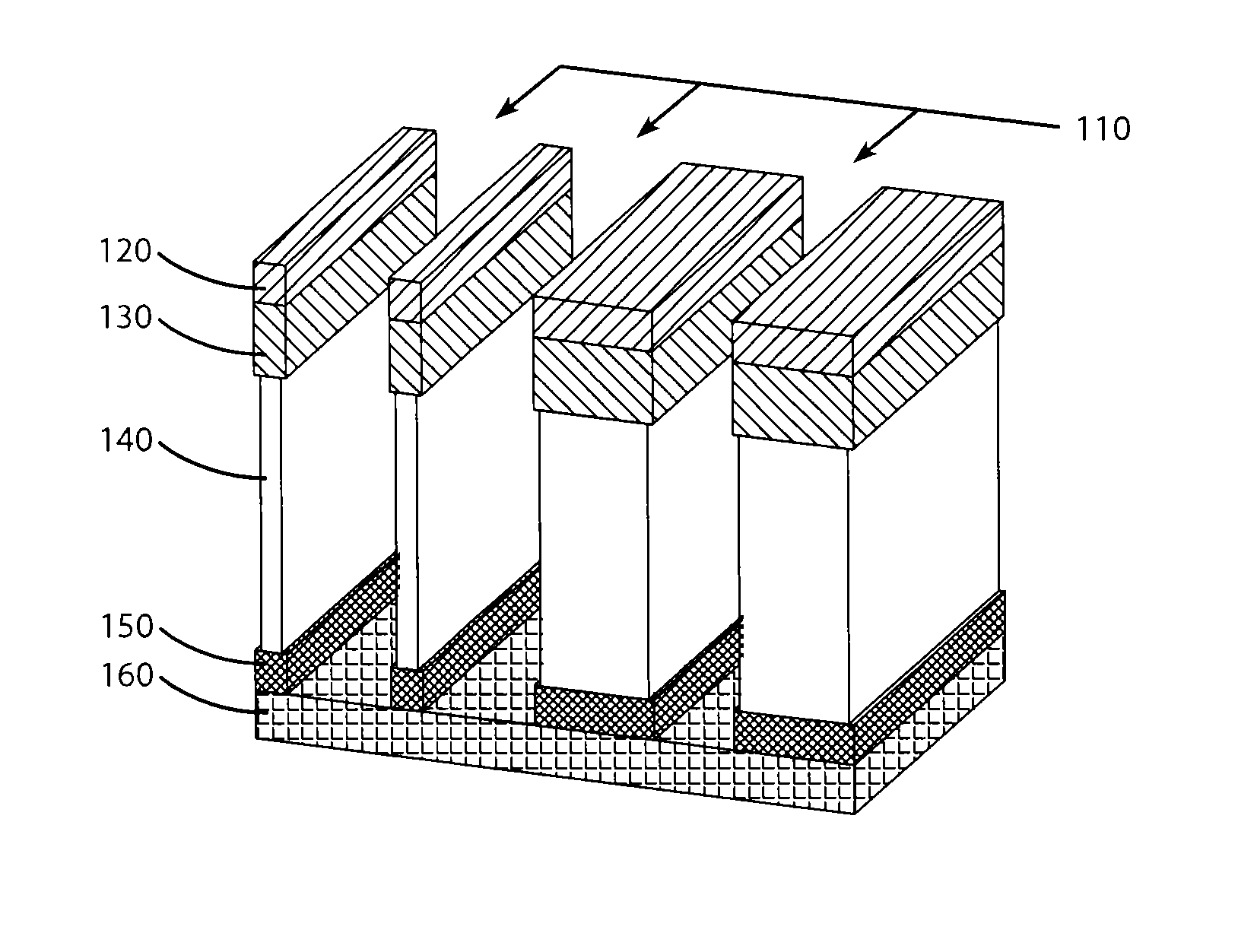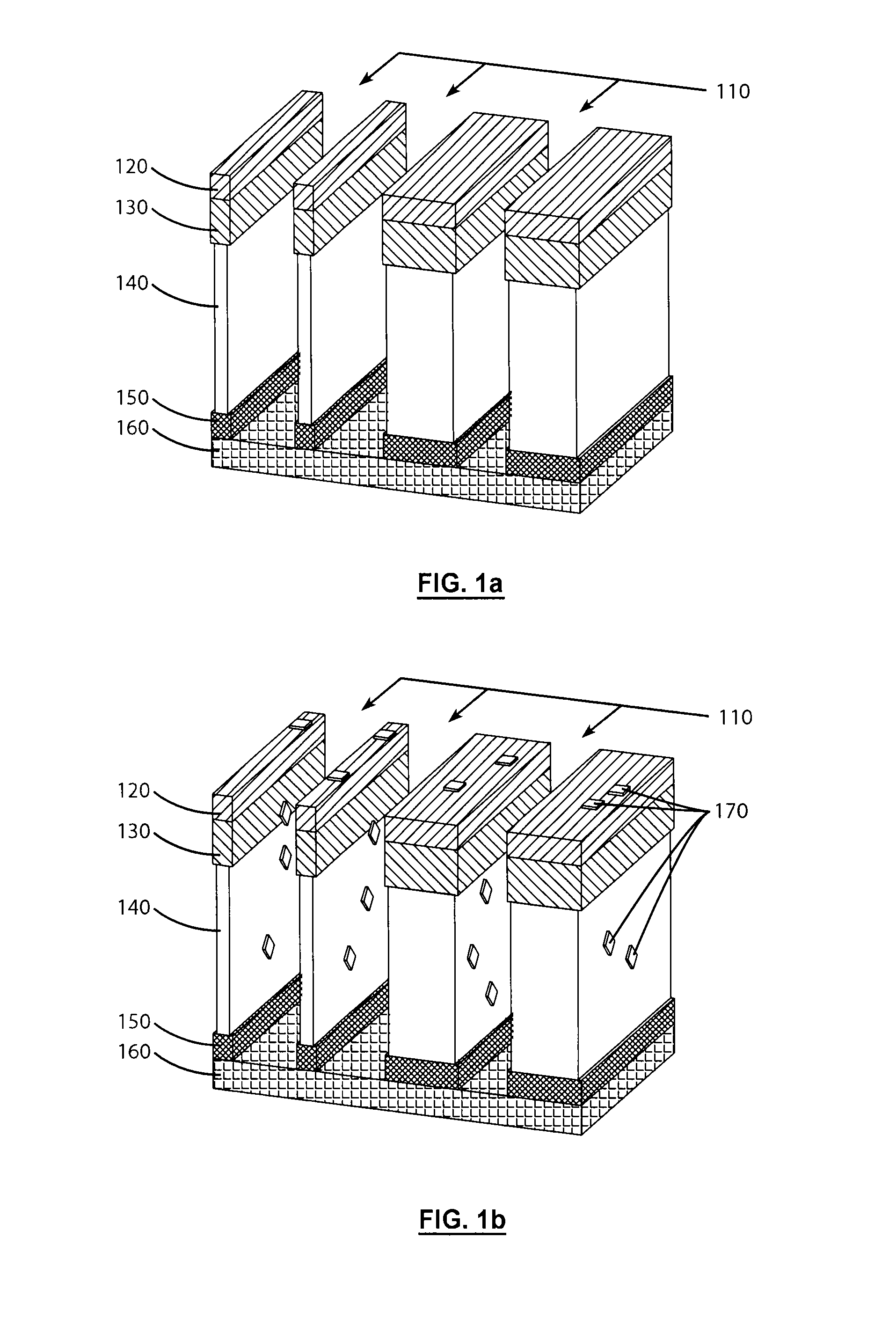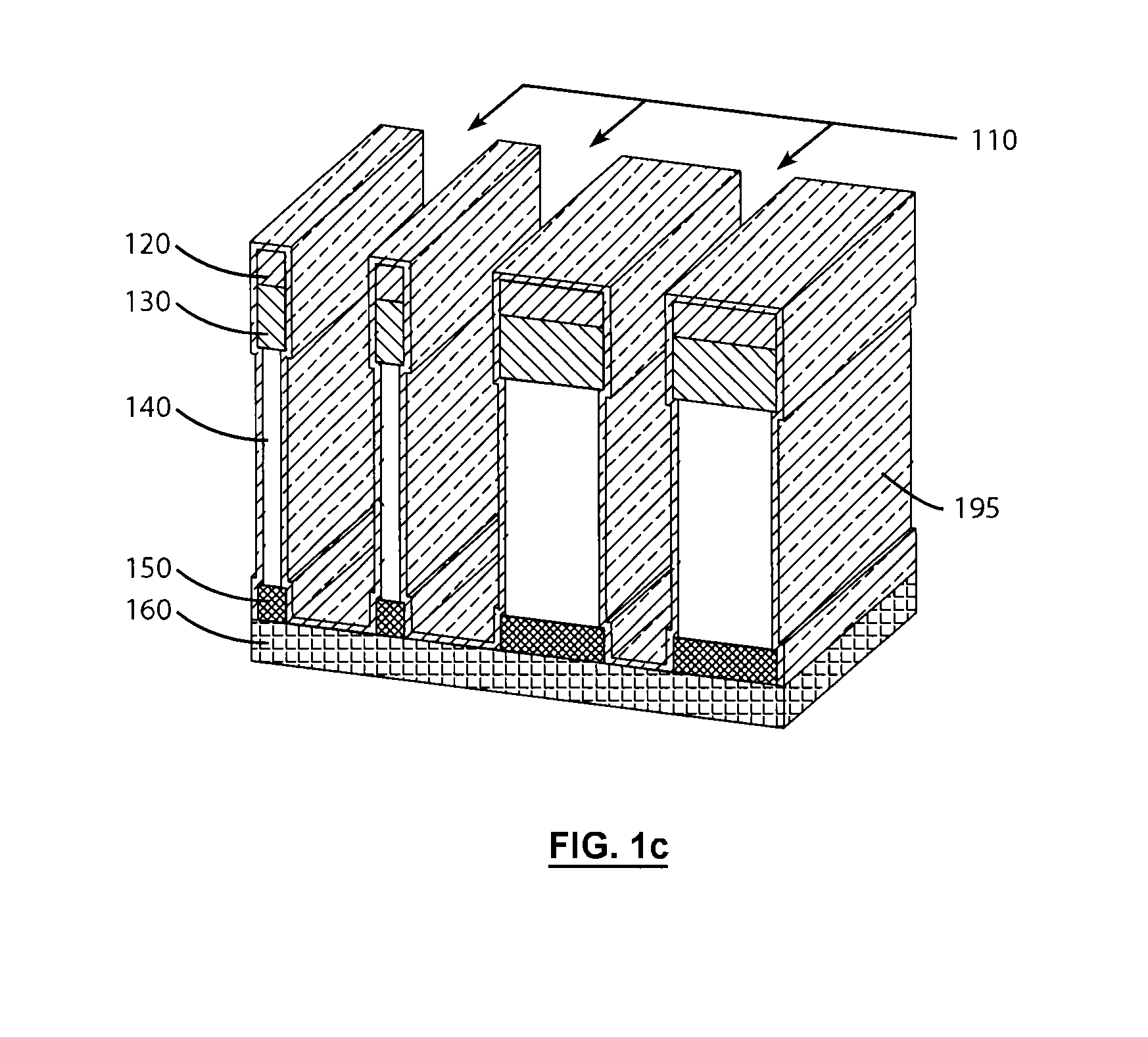Method of etching a porous dielectric material
a dielectric material and porous technology, applied in the field of porous dielectric materials, can solve the problems of material deformation, failure of devices produced, modification of porous and hybrid dielectric materials during production, etc., and achieve the effects of reducing or even eliminating damage and/or formation, low permittivity, and promoting the conduction of filling materials
- Summary
- Abstract
- Description
- Claims
- Application Information
AI Technical Summary
Benefits of technology
Problems solved by technology
Method used
Image
Examples
Embodiment Construction
[0030]In the context of the present invention, the term “on” or “underlying” does not necessarily mean “in contact with”. Thus, for example, depositing a first layer on a second layer does not necessarily mean that the two layers are directly in contact with each other but means that the first layer at least partially covers the second layer while being either directly in contact therewith or being separated therefrom by another layer or another element.
[0031]In the following description, the thicknesses are generally measured in directions perpendicular to the plane of the bottom face of the layer to be etched or of a substrate on which the bottom layer is disposed. Thus the thicknesses are generally taken in a vertical direction on the figures depicted. On the other hand, the thickness of a layer covering a flank of a pattern is taken in a direction perpendicular to this flank.
[0032]Before beginning a detailed review of embodiments of the invention, optional features, which may op...
PUM
| Property | Measurement | Unit |
|---|---|---|
| thicknesses | aaaaa | aaaaa |
| thicknesses | aaaaa | aaaaa |
| thicknesses | aaaaa | aaaaa |
Abstract
Description
Claims
Application Information
 Login to View More
Login to View More - R&D
- Intellectual Property
- Life Sciences
- Materials
- Tech Scout
- Unparalleled Data Quality
- Higher Quality Content
- 60% Fewer Hallucinations
Browse by: Latest US Patents, China's latest patents, Technical Efficacy Thesaurus, Application Domain, Technology Topic, Popular Technical Reports.
© 2025 PatSnap. All rights reserved.Legal|Privacy policy|Modern Slavery Act Transparency Statement|Sitemap|About US| Contact US: help@patsnap.com



